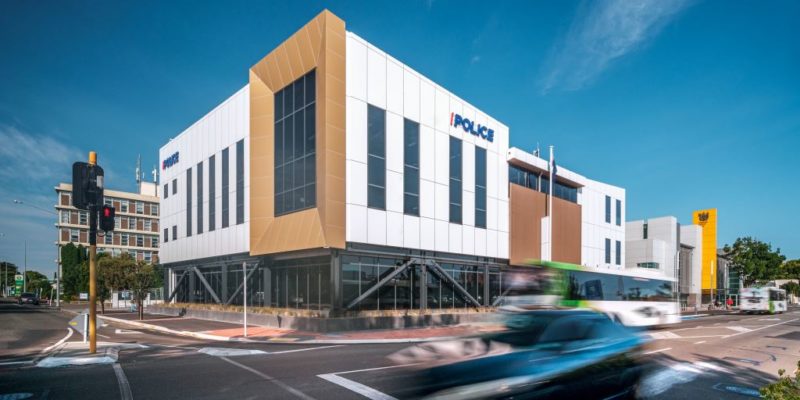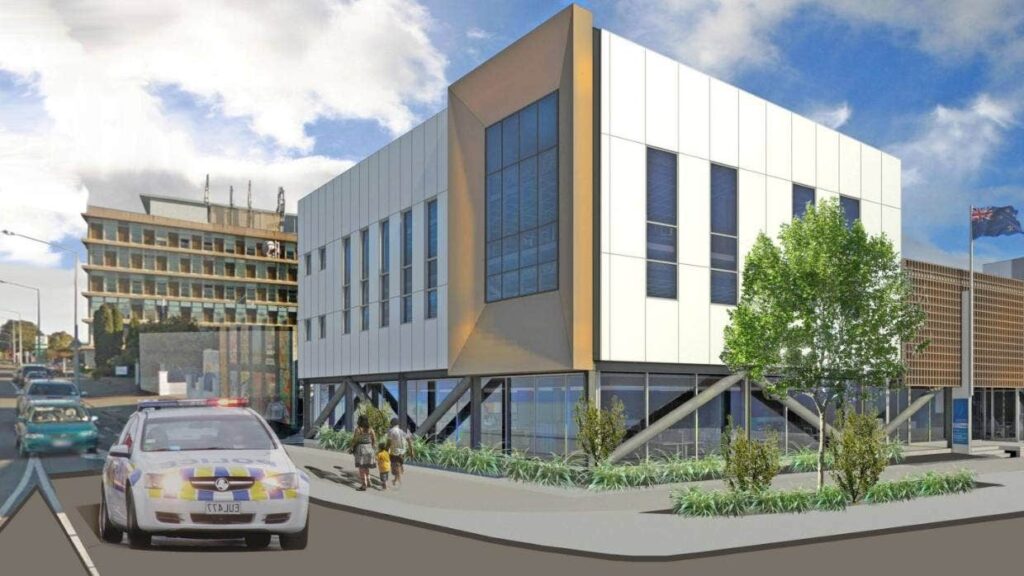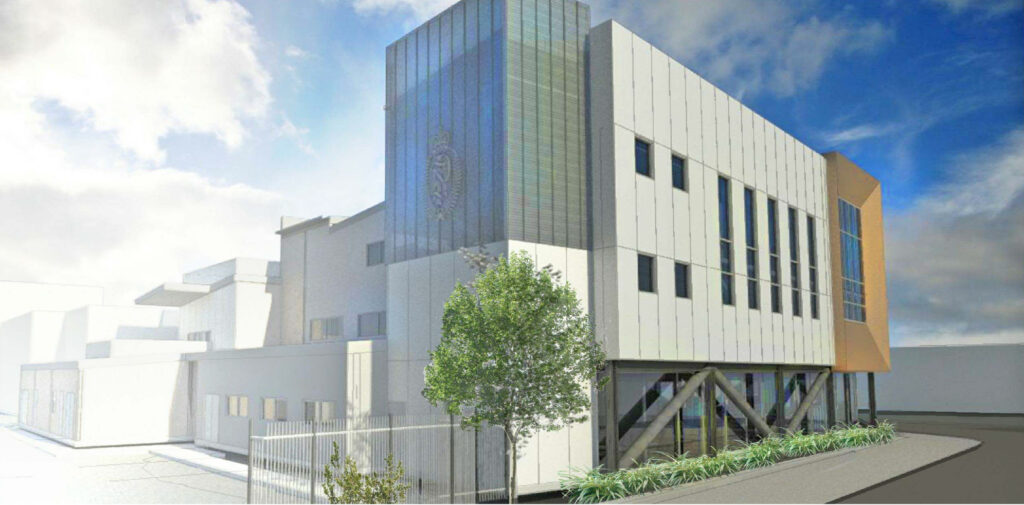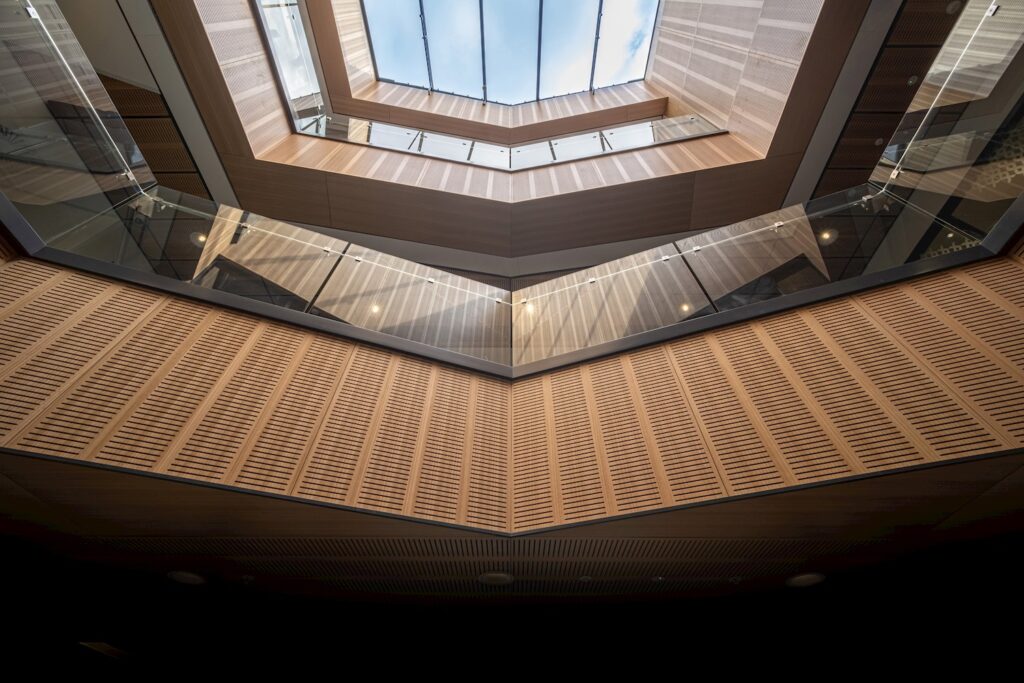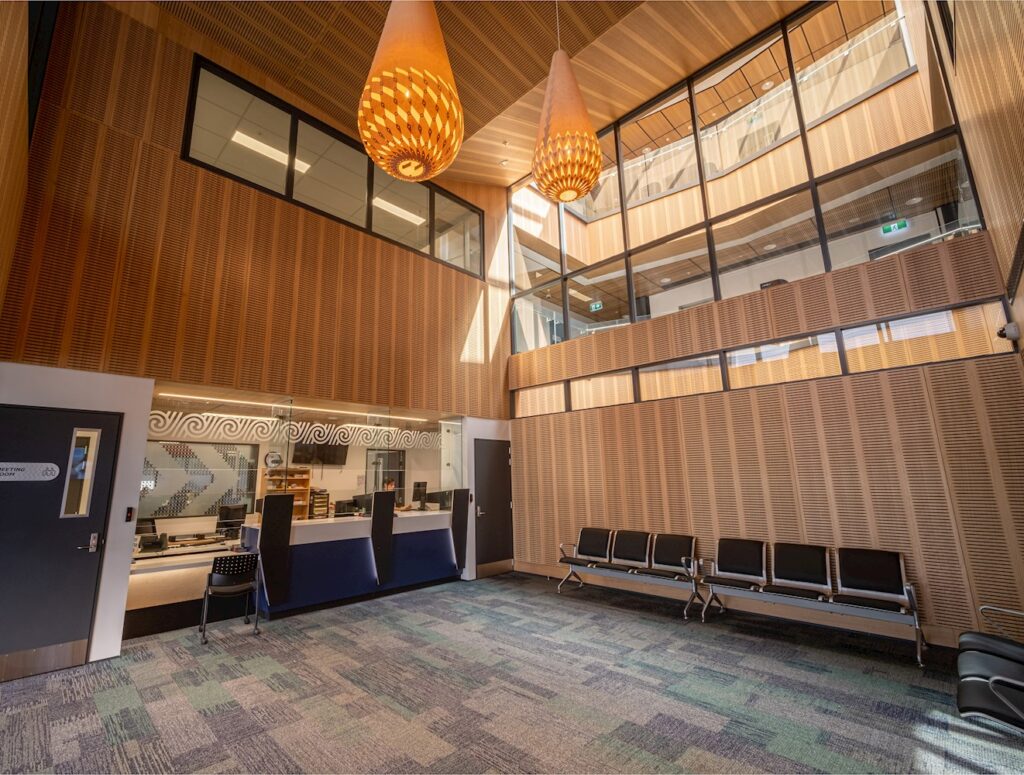When working on a project for the New Zealand Police it is important to ensure that every detail is completely locked down – particularly when it comes to cost.
White Associates took on a challenging and hugely rewarding project to manage the costs and budget for the comprehensive redevelopment of Hastings Police Station. Originally picking up the project alongside similar work for Napier Police Station, White Associates provided a range of pre- and post-contract services throughout this $20 million construction project that involved demolishing an existing station and constructing a new three-storey building to exacting seismic requirements on poor ground conditions.
Justin Maritz, White Associates’ pre-contract lead on the project, says that the project objective sounded straightforward at the outset: to manage the costs in the development of a modern, fit-for-purpose facility that maximised the station’s gross floor area in order to increase operational efficiency.
However, he says, ultimately White Associates’ job was more complex, requiring close collaboration with designers and end users to value-engineer design at the masterplan phase in order to deliver this IL3 building within a specified GFA, and meet operational requirements, all within budget.
“You could say that for us the project shared many of the requirements of police work: early detective work, intensive examination of detail, security of personnel in an operational site, coping with rapidly evolving information, and dogged determination, to ensure a successful result. It required us to keep our finger on the pulse of budgets at all times, especially as the project scope and design teams evolved.”
Dealing with challenges all the way through
The cost challenges arrived thick and fast when White Associates came on board. First among them was a background team change that saw GHD take on the design, says Maritz.
“We examined the user requirements and carried out a cost plan, as we could see that the original scheme was way over budget. The scheme had to be redone, and the new architects redesigned the scheme to the budget. This meant we had to know all about the building, while respecting the level of security and privacy the Police needed. We also needed to keep close tabs on client requirements, suggesting alternatives that saved project costs over the long term.
“We gave on-demand costings, responding well to mitigate any flow-on costs and programme implications. This involved working very closely with the client’s Project Director and Project Manager, flagging any costs to enable decisions to be made quickly and mitigate costs.”
High seismic stability on poor ground conditions
Construction in Hastings got underway in February 2019, and the challenges kept coming, says Justin Bearne, who led White Associates’ post-contract work:
“Ground conditions are always one of the biggest challenges for any construction project,” says Bearne. “The complicated landforms under the site required extensive specialist deepsoil mixing, pumping a substantial amount of cubic metres of material into the ground.
“Controlling costs in this environment required a close collaborative effort with the subcontractors and the main contractor. We did considerable analysis of the conditions; many options were considered, and we helped the client to understand the best value for money options, constantly looking at the best way to maximise budget. Options analysis was vital on this project, requiring many reviews of the methodology before we had a contractor on board.
“By factoring in the complicated ground conditions and its associated costs and allowance, we were able to provide the client with a robust budget estimate to then make an informed decision. That decision involved undergoing a redesign in order to bring the project within budget. By identifying the costs and risks early on, we were able to save our client time and money and ultimately put steps in place to provide a better project outcome.”
Controlling cost on operational site
With a court building and custodial unit next door to the police station, ground conditions were far from the end of the site challenges in Hastings. With people coming and going into court daily, plus the need to maintain holding cells and management units for them, the site was live and operational throughout the demolition and construction work.
Furthermore, as the project evolved additional scope was introduced mid-project. This included additional works to the police station, additional upgrades to cells, plus upgrade to ISO Annex buildings and services. Says Bearne:
“These additions in scope pulled us back into establishing budgets for sign-off approval and negotiating contract sums with the incumbent contractors. It required us to obtain additional funding, re-align budgets with business cases, negotiate value for money with the main contractor and minimize the impact of the project programme delivery.”
Bearne adds that it not only involved the use of temporary offices and holding cells to ensure the station could remain operational, but a considerable amount of stakeholder engagement too.
“The station works in close collaboration with the neighbouring Ministry of Justice facility. Given the nature of the station, the design team had to factor in the needs of the various internal and external stakeholders. We not only relied on our extensive experience working with the likes of the Department of Corrections, we also engaged in in-dept stakeholder dialogue in order to understand all of the nuances of this particular site. In doing so, we were able to ensure all of the respective groups’ requirements were captured in the master planning stage, and provided a realistic budget that was grounded in commercial realities.
“We worked closely with New Zealand Police and the design team on the delivery steps and sequencing for the project while keeping the site operational and maintaining high levels of security – and all while working closely with the neighbouring Ministry of Justice facility. We sought to segregate the work into set phases while looking for efficiencies in the programme in order to reduce cost where possible. Applying our experience and benchmarking against similar projects we were able to provide crucial information that enabled our client to make an informed decision which was in their best financial interest.
“By taking time with our stakeholder management, we managed to maintain a smooth process and kept control of design and cost, always one step ahead of changes on site.”
Maximising GFA while controlling cost
One of the most modern aspects of the project is one that most passers-by won’t see: within the building, NZ Police is pursuing new ways of working. In taking a modern, ‘agile’ approach to the internal layout of the working floors – providing more open space for people to use, thus requiring fewer fixed desks, and thus traditional calculations around space required per person – the Police are challenging the way they work, says Bearne.
“The agile approach is setting a new benchmark for the Police,” he says. “It is something of a hybrid project for them. Historically, they wouldn’t build such a small Gross Floor Area (GFA), and there were many discussions around the amount of space needed, hot desking and so on.
“Ultimately, through collaborating with the design team and end users, and applying our value engineering expertise, we were able to help ensure that the design met stakeholder needs while optimising the available space, all while looking for cost efficiencies, in order to deliver what turned out to be 3,300m² GFA within budget.”
Teamwork was the key
Ultimately, after the station was officially opened on 6 December 2019, it has proved to be an award-winner. Taking out the NZIA 2020 Hawkes Bay/Gisborne Architecture Awards, the judges commented that
“this complex project demonstrates how careful planning, good access to natural light, consideration of acoustics, and built-in flexibility can enhance a workplace and improve social outcomes. Internal planning was carefully considered and benefited from consultation between client and architect, and this process has been the catalyst for a desired cultural shift within the client organisation. Both figuratively and literally, the building illuminates the work done by Hastings police.”
Also nominated for the Warren and Mahoney Civic and Arts Property Award, the project demonstrates how success is driven by teamwork and collaboration, says Bearne.
“Teamwork is always a massive factor in project success. On this project, which had cost challenges pretty much from start to finish, success came predominantly through working extremely closely with the client, designers and MCL Construction to ensure the new building met stakeholder needs while optimising the available space and budget. It is immensely satisfying to see it now in use, doing its job, and recognised as a great outcome.”
This is echoed by Joseph McGowan, Project Director for NZ Police, who says:
“This project truly involved everyone from front line staff, District Commander, Consultants and Contractors as well as Hastings Council to find ways of overcoming the difficulties that presented over the course of this project. Without all of this input the project, which was put on indefinite hold at one point, would not have completed. I am genuinely grateful to everyone who made this project a success. Thank you. With this new Hub station we can go on to make a really positive contribution to the communities in Hawkes Bay and Eastern District as a whole.”

